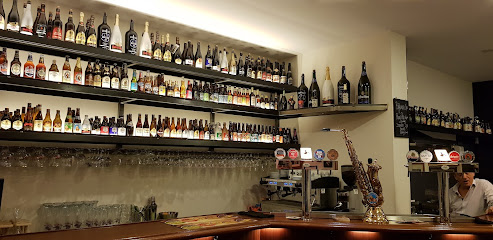
Journey Through Time at Castro de Sabroso
Explore the rich history and stunning landscapes at Castro de Sabroso, a captivating medieval settlement near Guimarães, Portugal.
Nestled near Guimarães, Castro de Sabroso is a captivating historical landmark that invites tourists to explore its rich heritage. This ancient site, set amidst stunning natural beauty, showcases the remnants of a medieval settlement, including impressive stone structures and breathtaking views of the surrounding landscape, making it a must-visit for history enthusiasts and nature lovers alike.
A brief summary to Castro de Sabroso
- Guimaraes, PT
- Monday 12 am-12 am
- Tuesday 12 am-12 am
- Wednesday 12 am-12 am
- Thursday 12 am-12 am
- Friday 12 am-12 am
- Saturday 12 am-12 am
- Sunday 12 am-12 am
Local tips
- Visit early in the morning or late afternoon for fewer crowds and the best light for photography.
- Wear comfortable shoes, as the terrain can be uneven while exploring the ruins.
- Bring a picnic to enjoy amidst the beautiful surroundings.
- Check local weather conditions before your visit to fully enjoy the outdoor experience.
- Don't forget to explore the nearby trails for additional scenic views.
Getting There
-
Walking
From the city center of Guimarães, head to the Guimarães Railway Station (Estação de Guimarães) which is about a 15-minute walk. Once you reach the station, take the bus service (Bus 9 or Bus 12) towards 'Serra de Santa Justa'. Disembark at the 'Castro de Sabroso' bus stop. The journey should take around 30 minutes. From the bus stop, follow the signs towards Castro de Sabroso, which is approximately a 10-minute walk uphill.
-
Public Transport
Starting at the Praça Oliveira in Guimarães, walk to the nearby bus terminal (Terminal Rodoviário de Guimarães). From there, take a direct bus to 'Castro de Sabroso'. Check the schedule for the latest departure times. The bus ride will take approximately 30 minutes, and you will be dropped off right at the entrance to the site. Make sure to confirm with the bus driver that you are headed to Castro de Sabroso.
Discover more about Castro de Sabroso
Iconic landmarks you can’t miss
Museu da Cultura Castreja
1.6 km
Discover the rich heritage of the Castro culture at the Museu da Cultura Castreja, a captivating museum in Salvador Briteiros, Portugal.

Fonte da Audição
5.7 km
Discover the beauty of Fonte da Audição in Braga, a captivating sculpture that embodies the city's artistic essence and offers a peaceful retreat.

Bom Jesus Funicular
5.7 km
Experience the breathtaking Bom Jesus Funicular in Braga, Portugal – a scenic ride to stunning views and historical treasures.

Alameda do Pórtico
5.8 km
Experience the enchanting beauty and historical significance of Alameda do Pórtico, a serene park in Sra. da Rocha, Portugal, perfect for relaxation and exploration.

Braga Portugal
7.5 km
Explore Braga, Portugal, a historical gem with stunning architecture, vibrant culture, and breathtaking landscapes that offer a unique travel experience.

Casa Rolão
7.9 km
Experience the rich history and warm hospitality of Casa Rolão, a charming hotel and historical site in the heart of Braga, Portugal.

Monumento ao Papa João Paulo II
7.9 km
Explore the captivating Monument to Pope John Paul II in Braga, a remarkable stone carving celebrating the legacy of one of history's most influential popes.

Congregados Basilica
7.9 km
Explore the awe-inspiring Congregados Basilica in Braga, a stunning Baroque masterpiece and a vital part of the city's cultural heritage.

Igreja do Hospital ou Igreja de São Marcos
8.0 km
Discover the architectural beauty and serene atmosphere of Igreja do Hospital ou Igreja de São Marcos, a historical gem in Braga, Portugal.

Saint Markus Church
8.0 km
Explore the breathtaking Saint Markus Church in Braga, a Baroque masterpiece that offers spiritual solace and a glimpse into the region's rich cultural heritage.

Monumento ao Sagrado Coração de Jesus
8.0 km
Explore the beauty of Braga at the Monument to the Sacred Heart of Jesus, a breathtaking landmark offering stunning views and rich cultural significance.
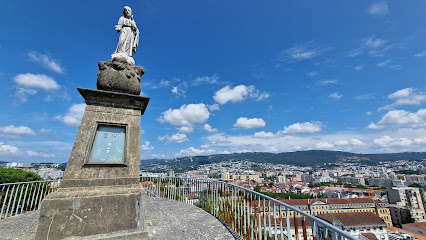
Letreiro Braga
8.0 km
Explore the vibrant Letreiro Braga, a colorful landmark that captures the essence of Braga, Portugal, and offers a perfect backdrop for unforgettable memories.
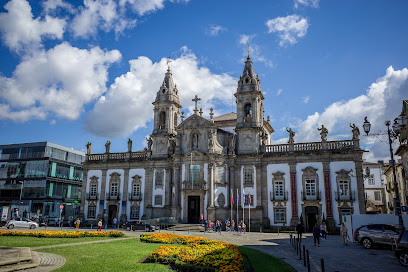
Holy Cross Church, Braga
8.0 km
Explore the architectural beauty and spiritual serenity of Holy Cross Church, Braga's iconic baroque masterpiece.

Estátua de Dom Pedro V
8.1 km
Explore the Estátua de Dom Pedro V in Braga, a stunning monument celebrating Portuguese history amidst a vibrant urban landscape.
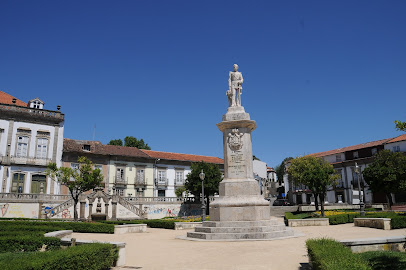
Chafariz da Praça da República
8.1 km
Discover the enchanting Chafariz da Praça da República in Braga, a historical fountain surrounded by vibrant cafes and rich cultural experiences.

Unmissable attractions to see
Cruzeiro de São Lourenço
0.7 km
Explore the historical beauty of Cruzeiro de São Lourenço in Guimarães, a stunning monument rich with cultural significance and artistic craftsmanship.

Citânia de Briteiros
2.7 km
Discover the rich history of Citânia de Briteiros, an ancient archaeological site that unveils the mysteries of Portugal's early civilizations amidst stunning landscapes.

Cruz do Sameiro
3.7 km
Discover the spiritual and scenic wonders of Cruz do Sameiro, a majestic sanctuary offering breathtaking views and rich cultural heritage in Braga, Portugal.

Jardim do Santuário do Sameiro
4.0 km
Explore the serene beauty of Jardim do Santuário do Sameiro in Braga, a tranquil garden perfect for nature lovers and those seeking peace.

Santuário de Santa Maria Madalena de Falperra
4.1 km
Discover the serene beauty of Santuário de Santa Maria Madalena de Falperra, a captivating Catholic church in Braga's picturesque hills.

Sanctuary of Our Lady of Sameiro
4.1 km
Explore the Sanctuary of Our Lady of Sameiro in Braga, a beautiful pilgrimage site with stunning architecture and breathtaking views.

Stairway of Sameiro Sanctuary
4.2 km
Discover the Stairway of Sameiro Sanctuary, a historical gem in Braga offering stunning views and a serene atmosphere for every traveler.

Baloiço Panorâmico de Esporões
4.5 km
Experience the thrill of swinging above the breathtaking landscapes at Baloiço Panorâmico de Esporões, a unique tourist attraction in Portugal.

Lake of the Good Jesus Park
5.5 km
Discover natural beauty and cultural heritage at the enchanting Lake of the Good Jesus Park in Braga, Portugal.

Bom Jesus do Monte
5.6 km
Discover the spiritual beauty and stunning vistas of Bom Jesus do Monte, a remarkable sanctuary in Portugal that captivates every traveler.

Basílica – Confraria do Bom Jesus do Monte
5.6 km
Explore the stunning Basílica do Bom Jesus do Monte, a baroque masterpiece offering breathtaking views and a rich spiritual experience in Braga, Portugal.

Largo do Pelicano
5.6 km
Discover the charm of Largo do Pelicano in Braga, a vibrant square rich in culture, history, and delightful local experiences.

Artificial cave
5.6 km
Explore the captivating beauty of the Artificial Cave at Bom Jesus do Monte, a stunning blend of nature and artistry in Braga, Portugal.

Bom Jesus Staircases
5.7 km
Explore the breathtaking Bom Jesus Staircases in Braga, a stunning historical landmark combining spirituality, beauty, and baroque architecture.

Pórtico
5.7 km
Explore the beauty and history of Pórtico, a must-visit tourist attraction in Braga, Portugal, blending culture, architecture, and local charm.

Essential places to dine
Dona Júlia
4.1 km
Experience the best of Portuguese cuisine at Dona Júlia in Braga – where tradition meets culinary excellence.

Restaurante 7 Maravilhas - Espaço Gourmet | Eventos - Guimarães
6.0 km
Discover exquisite dining at Restaurante 7 Maravilhas in Guimarães – where local flavors meet elegant event spaces.

Dona Pipa
6.2 km
Experience authentic Portuguese cuisine at Dona Pipa in Braga – where flavor meets tradition in a warm and welcoming atmosphere.

Restaurante Tia Isabel
6.8 km
Discover authentic Portuguese flavors and fresh seafood at Restaurante Tia Isabel in Braga - a culinary haven for every food lover.

Arcoense
6.9 km
Discover culinary excellence at Arcoense in Braga—where fresh ingredients meet innovative Portuguese cuisine in an elegant setting.

Restaurante Delicatum
7.0 km
Experience the essence of Portuguese cuisine at Restaurante Delicatum – where tradition meets modern taste in Braga's culinary landscape.

Fentelhas
7.1 km
Discover Fentelhas in Guimarães - where authentic Portuguese flavors meet exceptional hospitality in a charming setting.

Real Plazza
7.5 km
Discover Real Plazza: A culinary gem in Guimarães offering diverse flavors and an inviting atmosphere for every food lover.

Florêncio
7.6 km
Experience authentic Portuguese cuisine at Florêncio, a must-visit restaurant in Guimarães for all food lovers.

Naco na Pedra
7.6 km
Experience authentic Portuguese cuisine at Naco na Pedra in Braga – where tradition meets modern dining.

Monte dos Leitões
7.8 km
Experience authentic Portuguese cuisine at Monte dos Leitões in Guimarães - where every dish tells a story.

Gosto Superior
8.0 km
Discover Gosto Superior in Braga – A delightful vegetarian restaurant offering fresh ingredients and vibrant flavors in a cozy setting.

Restaurante Rá-Chá-Kao
8.1 km
Experience authentic Thai cuisine at Restaurante Rá-Chá-Kao in Braga, where every dish tells a story of tradition and flavor.

Retrokitchen
8.1 km
Experience the vibrant flavors of Portugal at Retrokitchen in Braga - where culinary creativity meets local charm.

Templo da Gula
8.1 km
Experience authentic Portuguese cuisine at Templo da Gula in Guimarães – a must-visit culinary destination for food lovers.
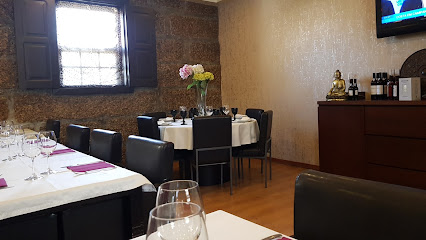
Markets, malls and hidden boutiques
Vilanova Minho Center
5.8 km
Discover fashionable finds at Vilanova Minho Center in Braga, offering a diverse range of clothing styles for every occasion.

Base Minho Center
5.9 km
Explore the lively Base Minho Center in Braga, a premier shopping destination offering unique local crafts and modern fashion.

Da Teresa
5.9 km
Discover stylish plus-size fashion at Da Teresa in Braga, where body positivity meets contemporary design.

Minho Center
5.9 km
Explore Minho Center: Braga's vibrant shopping mall with diverse stores, delicious dining, and family-friendly entertainment.

Loja das Couves
6.4 km
Experience the local flavors and artistic craftsmanship at Loja das Couves, a charming grocery store in Braga, Portugal.

ZARA
6.9 km
Discover the latest fashion trends at ZARA in Guimarães, where style meets affordability in a vibrant shopping atmosphere.

2ªOpção vintage store
7.0 km
Explore the charm of Braga at 2ªOpção Vintage Store, where unique vintage clothing and accessories await every fashion enthusiast.

Cortefiel
7.0 km
Explore Cortefiel in Guimarães for a refined shopping experience with exquisite men's and women's formal wear tailored to your style.
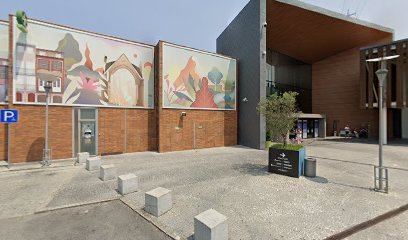
Espaço Guimarães
7.1 km
Explore Espaço Guimarães – The ultimate shopping and dining destination in Silvares, Portugal, featuring diverse shops, delicious food, and lively entertainment.

Zara Kids
7.4 km
Discover stylish and affordable children's clothing at Zara Kids in Braga, where fashion meets fun for your little ones!

Braga Parque
7.4 km
Discover Braga Parque, a premier shopping destination in Braga, Portugal, offering a diverse range of shops, dining, and entertainment options.

Pandora
7.4 km
Explore the elegant charm of Pandora in Braga Parque, where exquisite jewelry meets personalized style in a vibrant shopping destination.

Loja Mr. Blue Braga Parque
7.5 km
Discover stylish men's fashion at Loja Mr. Blue Braga Parque, your go-to destination for clothing and accessories in the heart of Braga.

Bazar Fujacal
7.6 km
Explore unique pre-loved fashion and accessories at Bazar Fujacal, Braga's charming used clothing store, perfect for eco-conscious shoppers.

Dunas Drapeadas Lda
7.7 km
Explore a chic women's clothing store in Braga, offering stylish apparel and unique accessories to elevate your travel wardrobe.

Essential bars & hidden hideouts
SKYBRAGA
5.2 km
Discover the vibrant nightlife and social scene at SKYBRAGA, a unique bar and café in Braga, Portugal, perfect for relaxation and mingling.

Lounge Bar
6.0 km
Discover Lounge Bar in Braga, where vibrant nightlife meets exceptional drinks in a cozy atmosphere, perfect for winding down your adventures.

Bill's Sports Bar
6.8 km
Discover the ultimate blend of sports, karaoke, and craft brews at Bill's Sports Bar in Braga, the perfect spot for a fun night out.

Rick Universal
6.9 km
Discover Braga's nightlife at Rick Universal, a lively bar offering affordable drinks and a welcoming atmosphere in the heart of the city.

33 Bar
6.9 km
Experience the heart of Braga's nightlife at 33 Bar, where great drinks and a lively atmosphere await you.

Carpe Noctem
6.9 km
Experience the vibrant nightlife of Braga at Carpe Noctem, the ultimate bar for students and travelers seeking fun and affordable drinks.
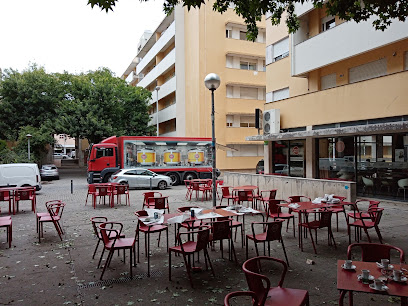
Diobar
7.0 km
Discover Diobar, a lively bar in Braga offering great drinks, affordable prices, and an inviting atmosphere near the University of Minho.

Gamers Bar
7.0 km
Discover Gamers Bar in Braga: the ultimate destination for gaming enthusiasts with affordable drinks, great ambiance, and a wide selection of games.

Gota d'Água
7.0 km
Discover the vibrant atmosphere of Gota d'Água, a cozy bar in Braga offering a delightful selection of drinks and friendly service.

Stephane Bar
7.0 km
Discover Stephane Bar in Braga: A lively hotspot for affordable drinks, local culture, and unforgettable nightlife experiences.

Krock - Bar & Food
7.0 km
Experience the vibrant atmosphere and delicious offerings at Krock - Braga's favorite bar and food destination for tourists and locals alike.

Vai com Deus Lounge Bar
7.1 km
Experience the vibrant nightlife at Vai com Deus Lounge Bar, a must-visit spot for drinks and fun in Braga, Portugal.

Flower Bar
7.4 km
Discover the vibrant nightlife of Braga at Flower Bar, where exquisite drinks and a lively atmosphere await you.

SamBar Snack-Bar | Guimarães
7.6 km
Discover SamBar Snack-Bar: A must-visit cocktail bar in Guimarães for refreshing drinks and a vibrant atmosphere.

Dona Beer
7.6 km
Discover the vibrant atmosphere of Dona Beer, a premier beer garden in Braga, offering an extensive selection of craft beers and a welcoming environment.
